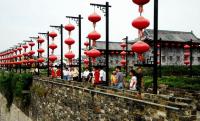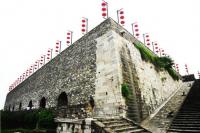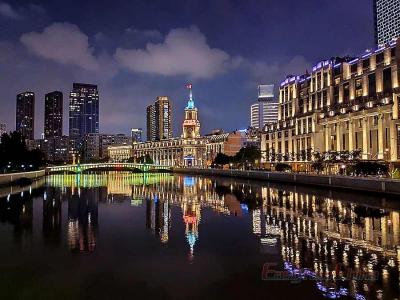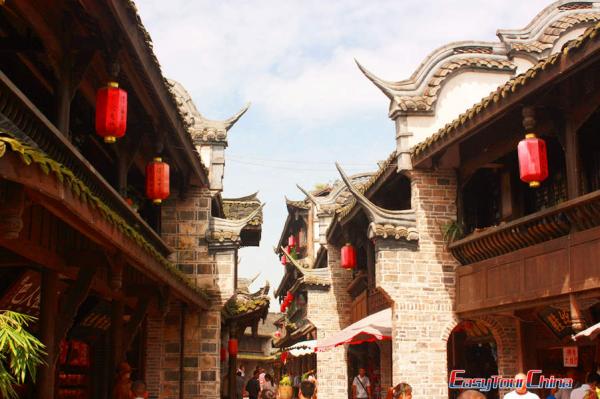The Gate of China
 Formerly known as Jubao Gate,the Gate of China was built on the site of the south gate of Nanjing, the capital city of the Southern Tang dynasty. The Gate of China is a renowned ancient city gate in China and has the most complex structure of any city gate in the world. It is a feat of engineering, comprising a complex and intricate design, and occupies an important place in wall-construction history in China.
Formerly known as Jubao Gate,the Gate of China was built on the site of the south gate of Nanjing, the capital city of the Southern Tang dynasty. The Gate of China is a renowned ancient city gate in China and has the most complex structure of any city gate in the world. It is a feat of engineering, comprising a complex and intricate design, and occupies an important place in wall-construction history in China.The Gate of China was built on the site of the south gate of the capital city of the Southern Tang dynasty. It was the largest among the thirteen gates of Nanjing. In 1931, after the Republic of China government established Nanjing as its capital, the gate was renamed the Gate of China. It has weathered wind and rain for 600 years.
 Today, the Gate of China still retains its original state except for the wooden structure, which has been destroyed, and some features on the wall made of sticks and stones. The gate was made of huge strip stones, thick and large Chinese brick. Its dimensions were 118.5 m from east to west, and 128 m from south to north. The ramparts were 20.45 m high. The total area enclosed was 15,168 square meters. Three barbicans were connected by four arched gates, each of which was equipped with a Qianjinzha which could be opened up and down, as well as a pair of wooden doors.
Today, the Gate of China still retains its original state except for the wooden structure, which has been destroyed, and some features on the wall made of sticks and stones. The gate was made of huge strip stones, thick and large Chinese brick. Its dimensions were 118.5 m from east to west, and 128 m from south to north. The ramparts were 20.45 m high. The total area enclosed was 15,168 square meters. Three barbicans were connected by four arched gates, each of which was equipped with a Qianjinzha which could be opened up and down, as well as a pair of wooden doors. Considering from the military, the gate strength is good for the military operation and is a valuable sample for the study of Chinese military history. At the top step, there used to be a wooden building to defend against the enemy. In the north section of it were constructed seven soldiers staying holes. In the middle of the lower step was an arched gate leading to the barbican. At the north section of it were three soldier staying holes. Outside of the east and west of barbican, there were constructed 14 soldier staying holes.
More Attractions in Nanjing


